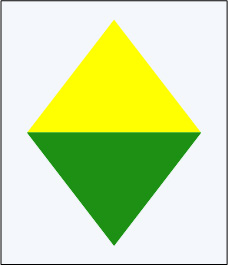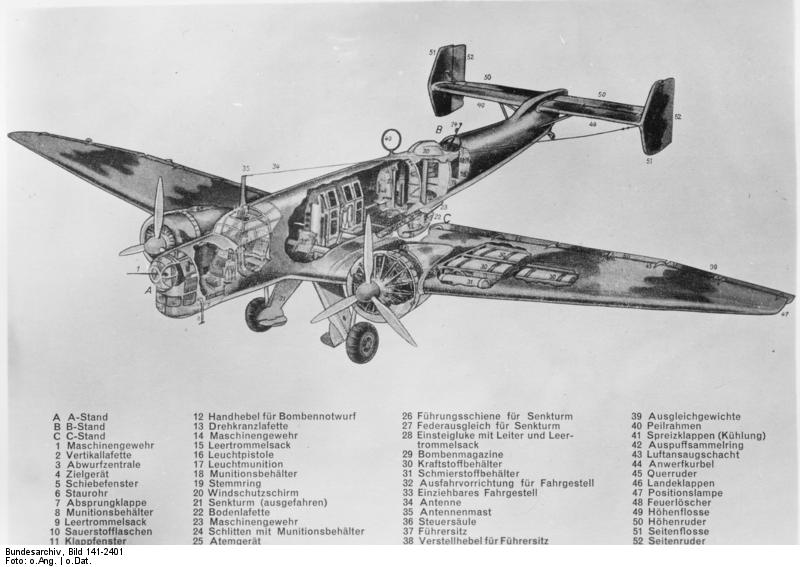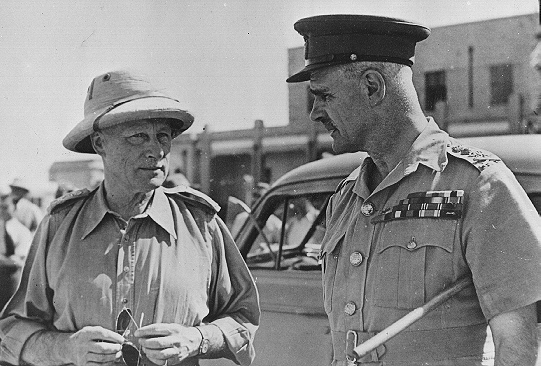|
1st Infantry Division (South Africa)
The 1st South African Infantry Division was an infantry division of the army of the Union of South Africa. During World War II the division served in East Africa from 1940 to 1941 and in the Western Desert Campaign from 1941 to 1942. The division was disbanded on 1 January 1943, for conversion into what would become the 6th South African Armoured Division. The division was also briefly active after the war from 1 July 1948 to 1 November 1949.South African Defence Review via http://www.rhodesia.nl/sadfhist.htm Outbreak of war When Neville Chamberlain declared war on 3 September 1939, the Union Defence Force consisted of 5,385 Permanent Force members, 14,631 Citizen Force members and 122,000 Commandos of which only 39,000 were considered suited for field deployment. The Defence Act also prohibited the deployment of its members beyond the confines of southern Africa. On 4 September, General Hertzog resigned and was replaced by General Smuts and two days later, on 6 Septemb ... [...More Info...] [...Related Items...] OR: [Wikipedia] [Google] [Baidu] |
Allies Of World War II
The Allies, formally referred to as the United Nations from 1942, were an international military coalition formed during the Second World War (1939–1945) to oppose the Axis powers, led by Nazi Germany, Imperial Japan, and Fascist Italy. Its principal members by 1941 were the United Kingdom, United States, Soviet Union, and China. Membership in the Allies varied during the course of the war. When the conflict broke out on 1 September 1939, the Allied coalition consisted of the United Kingdom, France, and Poland, as well as their respective dependencies, such as British India. They were soon joined by the independent dominions of the British Commonwealth: Canada, Australia, New Zealand and South Africa. Consequently, the initial alliance resembled that of the First World War. As Axis forces began invading northern Europe and the Balkans, the Allies added the Netherlands, Belgium, Norway, Greece, and Yugoslavia. The Soviet Union, which initially had a nonaggression pa ... [...More Info...] [...Related Items...] OR: [Wikipedia] [Google] [Baidu] |
6th Armoured Division (South Africa)
The 6th South African Armoured Division was the second armoured division of the South African Army and was formed during World War II. Established in early 1943, it was based on a nucleus of men from the former 1st South African Infantry Division who had returned to South Africa after the Second Battle of El Alamein in late 1942. The division was initially transferred to Egypt for training, after which it served in the Allied campaign in Italy during 1944 and 1945. In Italy, the division was initially deployed as part of the British Eighth Army, under command of Lieutenant-General Oliver Leese, and was then transferred to the U.S. Fifth Army, under Lieutenant General Mark W. Clark, for the remainder of the Italian Campaign. The division operated as a strongly reinforced division and was frequently used to spearhead the advance of the Corps and Army to which it was attached. They returned home after the end of the war in Italy and were disbanded in 1946. The division was a ... [...More Info...] [...Related Items...] OR: [Wikipedia] [Google] [Baidu] |
Bands (Italian Army Irregulars)
Bands ( it, Bande) was in Italian military term for irregular forces, composed normally of foreigners or natives, with some Italian officers and NCOs in command. These units were employed by the Italian Army as auxiliaries to the regular national and colonial military forces. They were also known to the British colonial forces as "armed Bands". Characteristics A (singular) was approximatively company sized. The larger unit was the battalion size (infantry) or (cavalry). The a regimental unit appeared briefly during the fascist period in the Balkans. The first of these irregular units employed by the originated from a mercenary Arab force employed by the Ottoman Empire, called ''Bashi-bazouk'' (which became "basci buzuk" in Italian), that was created in Eritrea by the Albanian adventurer Sagiak Hassan in the second half of the 19th century. In 1885, the Italian Colonel Tancredi Saletta, commanding officer of the first Italian troops involved in the conquest of Eritrea, en ... [...More Info...] [...Related Items...] OR: [Wikipedia] [Google] [Baidu] |
South African Air Force
"Through hardships to the stars" , colours = , colours_label = , march = , mascot = , anniversaries = , equipment = , equipment_label = , battles = * World War I * World War II East African campaign (World War II), East African Campaign North African campaign, North African Campaign Battle of Madagascar, Madagascar Italian campaign (World War II), Italy Balkans campaign (World War II), Balkans * Korean War * South African Border War * Angolan Civil War, Angolan Bush War , decorations = , battle_honours = , battle_honours_label = , flying_hours = , website = , commander1 = President of South Africa, President Cyril Ramaphosa , commander1_label = Commander-in-chief#South Africa, Comman ... [...More Info...] [...Related Items...] OR: [Wikipedia] [Google] [Baidu] |
Junkers Ju86
The Junkers Ju 86 was a German monoplane bomber and civilian airliner designed in the early 1930s, and employed by various air forces on both sides during World War II. The civilian model Ju 86B could carry ten passengers. Two were delivered to Swissair and five to Deutsche Luft Hansa. In addition a single civilian Ju 86Z was delivered to Sweden's AB Aerotransport. Design and development In 1934, a specification for a modern twin-engined aircraft, capable of operating both as a high-speed airliner for the German airline Luft Hansa and as a medium bomber for the nascent Luftwaffe, was issued to both Junkers and Heinkel. Five prototypes were ordered from each company; the Junkers Ju 86 and Heinkel He 111.Green and Swanborough 1982, p. 15. Junkers' design was a low-winged twin-engined monoplane, of all-metal stressed skin construction. Unlike most of Junkers' previous designs, it discarded the typical corrugated skinning in favour of smooth metal skinning which helped to reduce ... [...More Info...] [...Related Items...] OR: [Wikipedia] [Google] [Baidu] |
Mombasa
Mombasa ( ; ) is a coastal city in southeastern Kenya along the Indian Ocean. It was the first capital of the British East Africa, before Nairobi was elevated to capital city status. It now serves as the capital of Mombasa County. The town is known as "the white and blue city" in Kenya. It is the country's oldest (circa 900 AD) and second-largest List of cities in Kenya, cityThe World Factbook . Cia.gov. Retrieved on 17 August 2013. after the capital Nairobi, with a population of about 1,208,333 people according to the 2019 census. Its metropolitan region is the second-largest in the country, and has a population of 3,528,940 people. Mombasa's location on the Indian Ocean made it a historical trading centre, and it has been controlled by ma ... [...More Info...] [...Related Items...] OR: [Wikipedia] [Google] [Baidu] |
Marmon-Herrington
The Marmon-Herrington Company, Inc. is an American manufacturer of axles and transfer cases for trucks and other vehicles. Earlier, the company built military vehicles and some tanks during World War II, and until the late 1950s or early 1960s was a manufacturer of trucks and trolley buses. Marmon-Herrington had a partnership with Ford Motor Company, producing trucks and other commercial vehicles, such as buses. The company may be best known for its all-wheel-drive conversions to other truck maker's units, especially to Ford truck models. Founded in 1931, Marmon-Herrington was based in Indianapolis, Indiana, with a plant in Windsor, Ontario, and remained in Indianapolis until 1963. It is now based in Louisville, Kentucky. History Founded in 1931 by Walter C. Marmon and Arthur W. Herrington, the company was the successor to the Marmon Motor Car Company, a maker of high quality, costly automobiles from 1902 to 1933. By the early 1930s, the U.S. economy had taken a severe down ... [...More Info...] [...Related Items...] OR: [Wikipedia] [Google] [Baidu] |
1st Infantry Brigade (South Africa)
The South African 1st Infantry Brigade was an infantry brigade of the army of the Union of South Africa during World Wars I and II. During World War I, the Brigade served as a British formation in Egypt and on the Western Front, most famously the Battle of Delville Wood. It was reactivated at the start of the Second World War as a South African formation and served in East Africa and the Western Desert; the Brigade disbanded on 1 January 1943. World War I When the First World War broke out in 1914, the South African government chose to join the war on the side of the Allies. General Louis Botha, the then prime minister, faced widespread Afrikaner opposition to fighting alongside Great Britain so soon after the Second Boer War and had to put down a revolt by some of the more militant elements before he could mobilise and deploy troops as an expeditionary force (some 67,000 troops) to invade German South-West Africa (now Namibia). The South African Union Defence Act of 19 ... [...More Info...] [...Related Items...] OR: [Wikipedia] [Google] [Baidu] |
1 SSB SHOULDER FLASH
1 (one, unit, unity) is a number representing a single or the only entity. 1 is also a numerical digit and represents a single unit of counting or measurement. For example, a line segment of ''unit length'' is a line segment of length 1. In conventions of sign where zero is considered neither positive nor negative, 1 is the first and smallest positive integer. It is also sometimes considered the first of the infinite sequence of natural numbers, followed by 2, although by other definitions 1 is the second natural number, following 0. The fundamental mathematical property of 1 is to be a multiplicative identity, meaning that any number multiplied by 1 equals the same number. Most if not all properties of 1 can be deduced from this. In advanced mathematics, a multiplicative identity is often denoted 1, even if it is not a number. 1 is by convention not considered a prime number; this was not universally accepted until the mid-20th century. Additionally, 1 is the s ... [...More Info...] [...Related Items...] OR: [Wikipedia] [Google] [Baidu] |
Imperial General Staff
The Chief of the General Staff (CGS) has been the title of the professional head of the British Army since 1964. The CGS is a member of both the Chiefs of Staff Committee and the Army Board. Prior to 1964, the title was Chief of the Imperial General Staff (CIGS). Since 1959, the post has been immediately subordinate to the Chief of the Defence Staff, the post held by the professional head of the British Armed Forces. The current Chief of the General Staff is General Sir Patrick Sanders, who succeeded his predecessor, General Sir Mark Carleton-Smith, in June 2022. Background The title was also used for five years between the demise of the Commander-in-Chief of the Forces in 1904 and the introduction of Chief of the Imperial General Staff in 1909. The post was then held by General Sir Neville Lyttelton and, briefly, by Field Marshal Sir William Nicholson. Throughout the existence of the post the Chief of the General Staff has been the First Military Member of the Army Boar ... [...More Info...] [...Related Items...] OR: [Wikipedia] [Google] [Baidu] |
Kenya
) , national_anthem = "Ee Mungu Nguvu Yetu"() , image_map = , map_caption = , image_map2 = , capital = Nairobi , coordinates = , largest_city = Nairobi , official_languages = Constitution (2009) Art. 7 ational, official and other languages"(1) The national language of the Republic is Swahili. (2) The official languages of the Republic are Swahili and English. (3) The State shall–-–- (a) promote and protect the diversity of language of the people of Kenya; and (b) promote the development and use of indigenous languages, Kenyan Sign language, Braille and other communication formats and technologies accessible to persons with disabilities." , languages_type = National language , languages = Swahili , ethnic_groups = , ethnic_groups_year = 2019 census , religion = , religion_year = 2019 census , demonym = ... [...More Info...] [...Related Items...] OR: [Wikipedia] [Google] [Baidu] |
Archibald Wavell, 1st Earl Wavell
Field Marshal Archibald Percival Wavell, 1st Earl Wavell, (5 May 1883 – 24 May 1950) was a senior officer of the British Army. He served in the Second Boer War, the Bazar Valley Campaign and the First World War, during which he was wounded in the Second Battle of Ypres. In the Second World War, he served initially as Commander-in-Chief Middle East, in which role he led British forces to victory over the Italians in western Egypt and eastern Libya during Operation Compass in December 1940, only to be defeated by the German Army in the Western Desert in April 1941. He served as Commander-in-Chief, India, from July 1941 until June 1943 (apart from a brief tour as Commander of ABDACOM) and then served as Viceroy of India until his retirement in February 1947. Early life Born the son of Archibald Graham Wavell (who later became a major-general in the British Army and military commander of Johannesburg after its capture during the Second Boer WarSchofield 2006, p. 15) and Lill ... [...More Info...] [...Related Items...] OR: [Wikipedia] [Google] [Baidu] |







